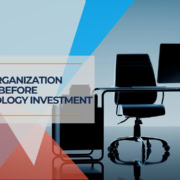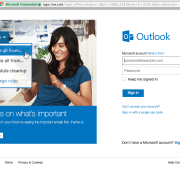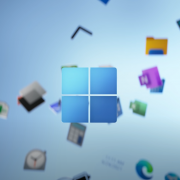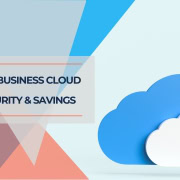Microsoft Surface Devices: Complete Guide to Windows 11 Business Computing
Published: October 26, 2022 | Last updated: October 2025
Key Takeaway: Microsoft Surface devices represent a mature ecosystem of business-focused computers that seamlessly integrate with Windows 11 and Microsoft 365. From the versatile Surface Pro 2-in-1 tablets to the powerful Surface Studio all-in-one workstations, these devices offer enterprise-grade security, cloud integration, and productivity features designed for modern hybrid work environments.
Microsoft Surface devices have evolved from innovative experiments into essential business computing tools. These premium Windows computers bridge the gap between traditional laptops, tablets, and desktop workstations, offering businesses flexible computing solutions that adapt to diverse work scenarios.
The Surface ecosystem encompasses everything from ultra-portable 2-in-1 devices perfect for field work to high-performance workstations capable of handling demanding creative and technical tasks. Each device integrates deeply with Microsoft 365 productivity suites, providing seamless access to cloud-based collaboration tools and enterprise security features.
Table of Contents
- 1 Understanding the Surface Device Ecosystem
- 2 Current Surface Device Lineup and Specifications
- 3 Windows 11 Integration and Business Features
- 4 Choosing the Right Surface Device for Your Business
- 5 Surface Accessories and Ecosystem Components
- 6 Business Implementation Strategies
- 7 Cost Considerations and ROI Analysis
- 8 Future-Proofing and Technology Trends
- 9 Implementation Best Practices and Recommendations
- 10 Frequently Asked Questions
- 10.0.1 Are Surface devices suitable for businesses that don't use Microsoft 365?
- 10.0.2 How do Surface devices compare to MacBooks for business use?
- 10.0.3 What is the typical replacement cycle for Surface devices in business environments?
- 10.0.4 Can Surface devices handle demanding applications like CAD software or video editing?
- 10.0.5 How does Surface device management work in mixed IT environments?
- 10.0.6 What support options are available for business Surface device deployments?
- 11 Conclusion: Making the Surface Decision
Understanding the Surface Device Ecosystem
Microsoft has developed distinct Surface product lines to address different business computing needs. Understanding these categories helps organizations choose the right devices for their specific workflows and user requirements.
Surface Pro Series – 2-in-1 Tablets
The flagship Surface Pro line combines tablet portability with laptop functionality. These devices feature detachable keyboards, built-in kickstands, and support for the Surface Pen stylus. They are ideal for mobile professionals, field workers, and anyone who needs computing flexibility.
Surface Laptop Series – Traditional Clamshells
Surface Laptops offer traditional laptop form factors with premium materials and extended battery life. These devices focus on productivity and portability, making them excellent choices for knowledge workers and business travelers.
Surface Studio Series – All-in-One Workstations
Surface Studio devices target creative professionals and technical users requiring large displays and powerful processing capabilities. These all-in-one systems feature adjustable touchscreens and support professional-grade peripherals.
Surface Go Series – Compact Computing
The most portable Surface devices are designed for basic productivity tasks, educational environments, and users who prioritize extreme portability over raw performance.
Current Surface Device Lineup and Specifications
The current Surface device lineup reflects Microsoft's focus on AI integration, enhanced security, and hybrid work capabilities. Each device category offers multiple configurations to match different performance and budget requirements.
Surface Pro 11 – Latest 2-in-1 Innovation
The Surface Pro 11 represents the latest evolution of Microsoft's flagship 2-in-1 device. Both Intel Core Ultra and Qualcomm Snapdragon X processors offer unprecedented flexibility for business users who need both performance and portability.
| Specification | Intel Version | Snapdragon Version |
|---|---|---|
| Processor | Intel Core Ultra 5/7 | Snapdragon X Elite/Plus |
| Display | 13″ PixelSense Flow, 120Hz | 13″ PixelSense Flow, 120Hz |
| Memory | 8GB-32GB LPDDR5x | 16GB-64GB LPDDR5x |
| Storage | 256GB-1TB SSD | 256GB-1TB SSD |
| Battery Life | Up to 14 hours | Up to 16 hours |
| Connectivity | Wi-Fi 7, Optional 5G | Wi-Fi 7, 5G Standard |
The Snapdragon version offers superior battery life and integrated 5G connectivity, making it ideal for mobile professionals. The Intel version is compatible with legacy business applications and x86 software requirements.
Surface Laptop 7 – Premium Productivity
The Surface Laptop 7 focuses on traditional laptop users who prioritize performance, battery life, and premium build quality. Available in 13.8-inch and 15-inch configurations, these devices target business users who spend most of their time in productivity applications.
Key Features:
- Snapdragon X Elite/Plus processors for extended battery life
- PixelSense touchscreen displays with 120Hz refresh rates
- Premium Alcantara or metal keyboard surfaces
- Windows Hello facial recognition and fingerprint authentication
- Thunderbolt 4 and USB-C connectivity
- Up to 22 hours of battery life for all-day productivity
The Surface Laptop 7 represents Microsoft's commitment to ARM-based computing, offering exceptional battery life while maintaining compatibility with most business applications through Windows 11's improved emulation capabilities.
Surface Studio 2+ – Creative Powerhouse
While not receiving annual updates like other Surface devices, the Surface Studio 2+ remains Microsoft's flagship creative workstation. This all-in-one system features a 28-inch PixelSense display that can transition from upright desktop mode to a nearly flat drawing surface.
Professional Applications
The Surface Studio 2+ excels in architectural visualization, graphic design, video editing, and 3D modeling workflows. Its unique form factor and Surface Dial accessory provide intuitive controls for creative applications like Adobe Creative Suite, Autodesk products, and Microsoft's own creative tools.
Windows 11 Integration and Business Features
Surface devices ship with Windows 11 Pro, providing access to advanced business features that enhance security, productivity, and device management. These capabilities make Surface devices particularly attractive for organizations with existing Microsoft infrastructure.
Enhanced Security Features
Modern Surface devices include hardware-based security features that integrate seamlessly with Windows 11's security framework. These features provide multiple layers of protection against evolving cyber threats.
- TPM 2.0 chips for hardware-based encryption and secure boot
- Windows Hello biometric authentication (facial recognition and fingerprint)
- Microsoft Pluton security processor on newer models
- Secure Core PC capabilities for firmware-level protection
- BitLocker device encryption is enabled by default
- Windows Defender Application Guard for isolated browsing
These security features work together to create a comprehensive defense system that protects against malware, unauthorized access, and data breaches. These built-in protections for organizations handling sensitive information provide enterprise-grade security without requiring additional software purchases.
Microsoft 365 and Cloud Integration
Surface devices are optimized for Microsoft's cloud-based productivity ecosystem. This integration goes beyond simple software compatibility to include hardware-level optimizations and exclusive features.
Seamless Collaboration Features:
Microsoft Teams Integration: Hardware-optimized audio and video processing ensure clear communication during virtual meetings. Surface devices include studio-quality microphones and cameras specifically tuned for Teams experiences.
OneDrive File Synchronization: Automatic cloud synchronization keeps files accessible across devices while maintaining local copies for offline work. Surface devices include intelligent sync features that prioritize frequently accessed files.
Microsoft Whiteboard: Surface devices with pen support provide natural digital whiteboarding experiences, allowing teams to collaborate visually during meetings and brainstorming sessions.
These integrations create a cohesive ecosystem where essential business equipment works together seamlessly, reducing friction and improving productivity across hybrid work environments.
Choosing the Right Surface Device for Your Business
Selecting appropriate Surface devices requires understanding your organization's specific use cases, performance requirements, and budget constraints. Different roles and workflows benefit from different Surface form factors and specifications.
Use Case Analysis Framework
| User Type | Recommended Device | Key Benefits |
|---|---|---|
| Mobile Executives | Surface Pro 11 (Snapdragon) | All-day battery, 5G connectivity, presentation flexibility |
| Knowledge Workers | Surface Laptop 7 | Traditional laptop experience, excellent keyboard, long battery |
| Field Technicians | Surface Pro 11 (Intel) | Rugged design, pen input, legacy software compatibility |
| Creative Professionals | Surface Studio 2+ | Large display, pen precision, powerful graphics |
| Remote Workers | Surface Laptop 7 15″ | Large screen, comfortable typing, reliable connectivity |
| Budget-Conscious Teams | Surface Go 4 | Lower cost, adequate performance, full Windows features |
Performance Considerations
Understanding the performance characteristics of different Surface processors helps organizations make informed decisions about device specifications and expected capabilities.
Intel vs. Snapdragon Decision Matrix:
Choose Intel Core Ultra when:
- Running legacy business applications requiring x86 compatibility
- Using specialized software with specific processor requirements
- Requiring maximum single-threaded performance
- Working with virtual machines or development environments
Choose Snapdragon X when:
- Prioritizing battery life and mobile connectivity
- Working primarily with modern web applications and Microsoft 365
- Needing always-on connectivity with 5G integration
- Focusing on productivity rather than specialized computing tasks
Application Compatibility Note
While Windows 11 on ARM has significantly improved application compatibility, organizations should test critical business applications on Snapdragon-based Surface devices before large-scale deployment. Modern applications work seamlessly, but some specialized or older software may require Intel processors.
Surface Accessories and Ecosystem Components
Microsoft has developed a comprehensive ecosystem of accessories that enhance Surface device functionality. These accessories are designed specifically for business use cases and integrate seamlessly with Surface hardware.
Essential Business Accessories
Surface Pro Signature Keyboard
The latest keyboard attachment for Surface Pro devices includes a larger trackpad, improved key travel, and a built-in storage compartment for the Surface Pen. The keyboard connects magnetically and provides a laptop-like typing experience for extended productivity sessions.
Surface Pen and Surface Slim Pen
Digital styluses are designed for natural writing and drawing experiences. The Surface Pen offers 4,096 pressure levels and tilt detection, while the Surface Slim Pen provides a more compact form factor with wireless charging capabilities when stored in compatible keyboards.
Surface Dock 2
A comprehensive docking solution that transforms Surface devices into desktop workstations. The dock provides multiple USB ports, dual 4K display support, Ethernet connectivity, and charging capabilities through a single Surface Connect cable.
Surface Headphones and Earbuds
Microsoft's audio accessories integrate with Windows 11 and Microsoft Teams to provide optimized communication experiences. Features include active noise cancellation, Teams integration, and seamless device switching.
Deployment and Management Accessories
Microsoft offers specialized accessories and services for organizations deploying multiple Surface devices that streamline device management and deployment processes.
- Surface Enterprise Management Mode (SEMM) for firmware-level security controls
- Surface Diagnostic Toolkit for IT troubleshooting and maintenance
- Microsoft Surface for Business purchasing programs with volume discounts
- Surface as a Service subscription options for predictable device refresh cycles
- Extended warranty and support options for business-critical deployments
Business Implementation Strategies
Successfully implementing Surface devices across an organization requires careful planning, pilot testing, and phased deployment approaches. Understanding these strategies helps ensure smooth transitions and maximum user adoption.
Pilot Program Framework
Phase 1: Assessment and Planning (2-4 weeks)
Evaluate current hardware inventory, identify user groups with different needs, and establish success criteria. Test critical business applications on target Surface devices and assess network infrastructure requirements for cloud integration.
Phase 2: Limited Pilot Deployment (4-8 weeks)
Deploy Surface devices to a small group of representative users across different roles and departments. Gather feedback on performance, compatibility, and user experience while monitoring support requirements and usage patterns.
Phase 3: Expanded Rollout (3-6 months)
Based on pilot results, refine deployment procedures and begin broader distribution. Implement device management policies, security configurations, and user training programs to ensure consistent experiences across the organization.
Integration with Existing Infrastructure
Surface devices integrate well with existing business infrastructure, but organizations should consider several factors to maximize the benefits of their investment.
Active Directory and Azure AD Integration:
Surface devices support both traditional Active Directory domain joining and modern Azure Active Directory (Entra ID) management. Organizations can implement hybrid identity solutions that provide seamless single sign-on across cloud and on-premises resources.
Mobile Device Management (MDM):
Windows 11 on Surface devices supports comprehensive MDM solutions, including Microsoft Intune, VMware Workspace ONE, and other enterprise mobility management platforms. These solutions enable remote device configuration, security policy enforcement, and application distribution.
Network Infrastructure Considerations:
Organizations should ensure their wireless networks can support increased device density and bandwidth requirements. Surface devices with 5G connectivity can reduce network load while providing backup connectivity options.
Proper integration planning ensures that Surface devices enhance rather than complicate existing IT infrastructure, while business email and communication systems work seamlessly across all devices.
Cost Considerations and ROI Analysis
While Surface devices typically command premium pricing compared to generic business laptops, organizations often find that the total cost of ownership and productivity benefits justify the investment. Understanding these cost factors helps build compelling business cases for Surface adoption.
Total Cost of Ownership Factors
| Cost Category | Surface Advantages | Potential Savings |
|---|---|---|
| Initial Hardware Cost | Premium pricing, but includes Windows Pro licensing | Bundled software reduces separate licensing costs |
| Support and Maintenance | Direct Microsoft support, predictable warranty terms | Reduced third-party support complexity |
| Device Management | Native integration with Microsoft management tools | Lower IT administration overhead |
| Security Software | Built-in Windows Defender and hardware security | Reduced need for third-party security solutions |
| User Productivity | Optimized for Microsoft 365 workflows | Improved efficiency and reduced training time |
Productivity and ROI Benefits
Organizations implementing Surface devices often report measurable productivity improvements that offset higher initial costs. These benefits accumulate over the typical 3-4 year device lifecycle.
- Reduced boot and wake times improve daily efficiency
- Better battery life eliminates productivity interruptions
- Seamless cloud integration reduces file management overhead
- Built-in security features reduce breach risk and associated costs
- Form factor flexibility supports diverse work scenarios
- Lower failure rates reduce support tickets and downtime
Financing and Procurement Options:
Microsoft offers several purchasing programs designed to make Surface devices more accessible to businesses of all sizes. Surface as a Service provides predictable monthly costs, including hardware, software, and support. Volume licensing programs offer discounts for larger deployments, while leasing options help organizations manage cash flow and technology refresh cycles.
Future-Proofing and Technology Trends
Microsoft continues to innovate within the Surface ecosystem, incorporating emerging technologies and responding to changing business needs. Understanding these trends helps organizations make strategic decisions about device investments and deployment timing.
AI and Machine Learning Integration
Recent Surface devices include dedicated AI processing capabilities that enhance productivity applications and enable new computing experiences. These features represent Microsoft's vision for the future of business computing.
Current AI Features
Windows 11 on Surface devices includes AI-powered features like intelligent background blur during video calls, automatic transcription and translation services, and predictive text and content suggestions. These capabilities improve user productivity while maintaining privacy through on-device processing.
Emerging Capabilities
Future Surface devices will likely include more sophisticated AI assistants, automated workflow optimization, and enhanced security features powered by machine learning. Microsoft's Copilot integration across Office applications demonstrates the direction of AI-enhanced productivity tools.
Sustainability and Environmental Considerations
Microsoft has committed to carbon neutrality and sustainable manufacturing practices across the Surface product line. These initiatives align with corporate sustainability goals while potentially reducing long-term operational costs.
- Increased use of recycled materials in device construction
- Improved energy efficiency, extending battery life and reducing power consumption
- Packaging reduction and elimination of single-use plastics
- Device recycling programs for end-of-life hardware
- Carbon offset programs for manufacturing and shipping
These sustainability initiatives help organizations meet environmental goals while potentially qualifying for green technology tax incentives and corporate sustainability credits.
Implementation Best Practices and Recommendations
Based on extensive experience with Surface device deployments across various industries, several best practices have emerged that help organizations maximize their investment and ensure successful adoption.
Device Configuration and Setup
Proper initial configuration significantly impacts user experience and long-term device management efficiency. Organizations should develop standardized setup procedures that balance security requirements with user flexibility.
Recommended Configuration Steps:
Pre-deployment Setup: Configure devices with organizational accounts, install required business applications, and apply security policies before distributing to end users. This approach reduces initial setup time and ensures consistent configurations.
User Account Management: Implement Azure AD integration for seamless single sign-on across Microsoft services. Configure automatic OneDrive synchronization and backup policies to protect user data and enable device replacement scenarios.
Security Baseline Configuration: Enable BitLocker encryption, configure Windows Hello biometric authentication, and implement appropriate update policies. These security measures should be transparent to users while providing comprehensive protection.
Training and Change Management
User adoption success depends heavily on effective training programs and change management strategies. Surface devices often introduce new interaction paradigms that require user education and support.
- Develop role-specific training materials focusing on relevant features
- Create video tutorials demonstrating common tasks and workflows
- Establish power user champions within each department
- Provide hands-on training sessions for complex features like pen input
- Implement gradual feature rollouts to avoid overwhelming users
- Maintain feedback channels for ongoing improvement suggestions
Organizations that invest in comprehensive training programs typically see higher user satisfaction scores and faster productivity improvements following Surface device deployments.
Common Implementation Challenges
The most frequently reported challenges include application compatibility issues with ARM-based processors, user adaptation to new form factors, and integration complexity with existing IT infrastructure. Addressing these challenges proactively through pilot programs and thorough testing reduces deployment risks and improves outcomes.
For comprehensive guidance on setting up productive work environments, our Windows 11 upgrade and optimization guide provides detailed information about maximizing Surface device performance and capabilities.
Frequently Asked Questions
Are Surface devices suitable for businesses that don't use Microsoft 365?
Yes, Surface devices work well with alternative productivity suites like Google Workspace, though some integration benefits are lost. The devices run standard Windows applications and support most business software. However, organizations using competing ecosystems may not realize the full value proposition of Surface hardware.
How do Surface devices compare to MacBooks for business use?
Surface devices excel in environments with existing Windows infrastructure, Microsoft 365 usage, and requirements for pen input or 2-in-1 flexibility. MacBooks typically offer better performance per dollar and longer software support lifecycles. The choice often depends on existing IT infrastructure and user preferences rather than absolute technical superiority.
What is the typical replacement cycle for Surface devices in business environments?
Most organizations replace Surface devices every 3-4 years, similar to other premium business laptops. The devices generally maintain good performance throughout this period, with battery degradation being the primary factor driving replacement decisions. Extended warranty options can extend useful life to 5 years for cost-conscious organizations.
Can Surface devices handle demanding applications like CAD software or video editing?
Higher-end Surface devices, particularly the Surface Studio 2+ and Surface Laptop Studio, can handle professional creative applications. However, organizations with intensive computing requirements should carefully evaluate performance specifications against their specific software needs. Some specialized applications may perform better on traditional workstations with discrete graphics cards.
How does Surface device management work in mixed IT environments?
Surface devices integrate well with most enterprise device management platforms beyond Microsoft's own tools. They support standard Windows management protocols and can be managed alongside other Windows devices using existing tools and procedures. The main advantage comes from tighter integration with Microsoft's ecosystem rather than exclusive management requirements.
What support options are available for business Surface device deployments?
Microsoft offers comprehensive business support, including extended warranties, next-business-day replacement services, and dedicated technical support channels. Organizations can also work with Microsoft partners for deployment assistance, training, and ongoing support. These support options often provide better service levels than typical consumer electronics warranties.
Conclusion: Making the Surface Decision
Microsoft Surface devices represent a mature and comprehensive approach to business computing that aligns particularly well with organizations already invested in the Microsoft ecosystem. Combining premium hardware, deep Windows 11 integration, and comprehensive security features creates compelling value propositions for many business scenarios.
The key to successful Surface adoption lies in understanding your organization's specific needs, conducting thorough pilot testing, and implementing comprehensive change management strategies. While Surface devices command premium pricing, the total cost of ownership benefits and productivity improvements often justify the investment over typical device lifecycles.
Organizations considering Surface devices should evaluate their current IT infrastructure, user requirements, and strategic technology direction. The devices work best when they complement existing Microsoft investments and align with hybrid work strategies that emphasize flexibility and mobility.
For businesses seeking expert guidance on Surface device selection, deployment planning, or integration strategies, professional consultation can help navigate the complexity of modern business computing decisions and ensure optimal outcomes for your technology investments.











Leave a Reply
Want to join the discussion?Feel free to contribute!